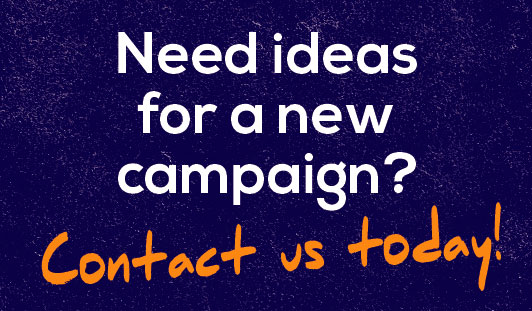What Does Embossing Mean?
Embossing is the process of creating a raised design or image on paper, card, or other materials using heat and pressure. The design is pressed from underneath, making it stand out above the surface. This raised texture can highlight logos, text, or decorative patterns to create a premium, tactile look.
In simple terms, embossing means elevating parts of a design to make them physically stand out. It’s widely used in business stationery, packaging, certificates, and promotional merchandise to add elegance and dimension.
Embossment Meaning vs. Embossing Meaning
While both terms are often used interchangeably, they have slightly different implications:
· Embossing refers to the process of creating a raised design.
· Embossment is the result — the raised area or image itself.
So, the embossment is what you can touch and feel after the embossing process has been completed.
How Does the Embossing Process Work?
Embossing relies on a combination of heat, pressure, and custom metal dies to reshape the surface of the material.
1. Design Preparation – The artwork or logo is prepared digitally, ensuring it’s suitable for embossing (with clear lines and no thin details).
2. Creating the Die and Counter-Die – Two metal plates are made: one raised (male die) and one recessed (female die).
3. Heat and Pressure Application – The material is placed between these plates, and heat and pressure are applied to form the raised impression.
4. Finishing Options – Embossing can be combined with foil stamping or ink to enhance visibility, or left uncoloured for a subtle, blind-embossed look.
What Is Blind Embossing?
Blind embossing refers to embossing without any ink, foil, or colour. It’s purely about texture and shadow. This subtle effect is ideal for minimalist branding, premium stationery, or certificates where understated elegance matters more than colour contrast.
Example applications:
· Wedding invitations
· Letterheads and luxury packaging
· Premium branded merchandise tags
Embossing in Printmaking
In printmaking, embossing is used creatively to produce three-dimensional impressions on paper without ink. Artists often use it to add depth or texture to their work. The same principles apply — pressure and a shaped die create the raised image — but in a more artistic context rather than for branding.
Embossing vs. Debossing
|
Feature
|
Embossing
|
Debossing
|
|
Effect
|
Raised above surface
|
Indented into surface
|
|
Feel
|
Textured, elevated
|
Sunken, engraved
|
|
Common Use
|
Highlighting logos or design details
|
Adding subtle depth or vintage feel
|
|
Looks Best On
|
Smooth paper or card
|
Textured or thicker materials
|
Both techniques are popular in branding and promotional printing — especially for notebooks, packaging, and premium promotional merchandise where tactile impact enhances brand perception.
Why Brands Use Embossing
Embossing goes beyond decoration. It communicates quality, attention to detail, and authenticity - traits that align with high-value branding. Businesses often use it to make their materials stand out both visually and physically.
Key advantages:
· Enhances brand perception through premium texture
· Improves memorability of print materials
· Works seamlessly with eco-friendly, uncoated papers
· Suitable for both corporate and creative applications
Common Applications of Embossing
You’ll find embossing across a wide range of printed and promotional materials, including:
· Business cards with raised logos
· Gift boxes and product packaging
· Branded notebooks and folders
· Luxury certificates and invitations
· Corporate merchandise such as labels and swing tags
For example, many UK brands use embossed promotional products to elevate their presentation - making even simple materials look more bespoke and professional.
Embossing in Branding and Promotional Merchandise
When applied thoughtfully, embossing can transform ordinary branded merchandise into premium giveaways. A branded notebook with an embossed logo or a gift box with blind embossing instantly feels more valuable. This tactile experience reinforces your brand identity and creates a lasting impression.
If your business invests in branded merchandise, consider adding embossing as part of the finishing process. It’s subtle, sustainable, and adds perceived quality without extra printing.
Frequently Asked Questions About Embossing
1. What is embossing used for?
Embossing is used to add a raised, textured effect to printed materials such as business cards, packaging, invitations, and branded merchandise. It enhances visual appeal and gives a premium look and feel.
2. What materials can be embossed?
Embossing works best on thick paper, cardboard, leather, and some plastics. The key requirement is that the material must be flexible enough to hold the raised impression without tearing.
3. What is the difference between embossing and debossing?
Embossing raises the design above the surface, while debossing presses it below the surface. Both techniques use the same die-and-pressure method but create opposite effects.
4. What is blind embossing?
Blind embossing means creating a raised design without adding colour, ink, or foil. The design relies solely on texture and shadow for visual impact.
5. Is embossing expensive?
Embossing can be slightly more expensive than standard printing because it requires custom dies and setup. However, it’s often worth the investment for premium packaging or promotional materials that aim to make a strong first impression.
6. Can embossing be combined with other finishes?
Yes. Embossing is often paired with foil stamping, spot UV, or ink printing to create multi-layered visual effects and highlight specific design elements.
7. How long does embossing last?
When applied to durable materials like coated paper or leather, embossing can last for years without fading or wearing off. It’s a long-lasting finishing option ideal for keepsake materials and brand packaging.
Final Thoughts
Embossing is one of those traditional printing techniques that continues to thrive in modern branding. Whether you’re creating stationery, packaging, or promotional merchandise, embossing adds depth, tactility, and distinction — helping your brand leave a physical mark that digital design can’t replicate.


